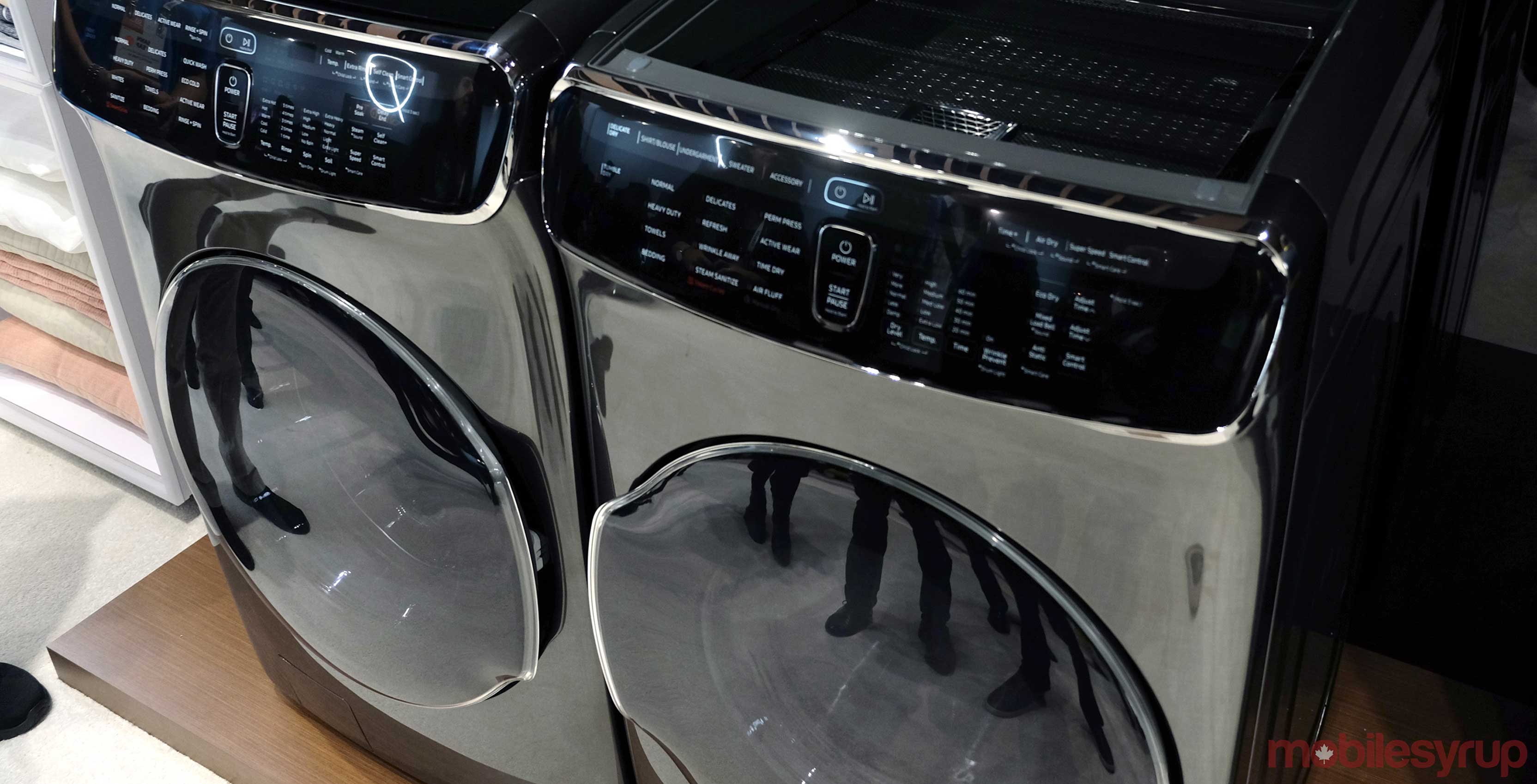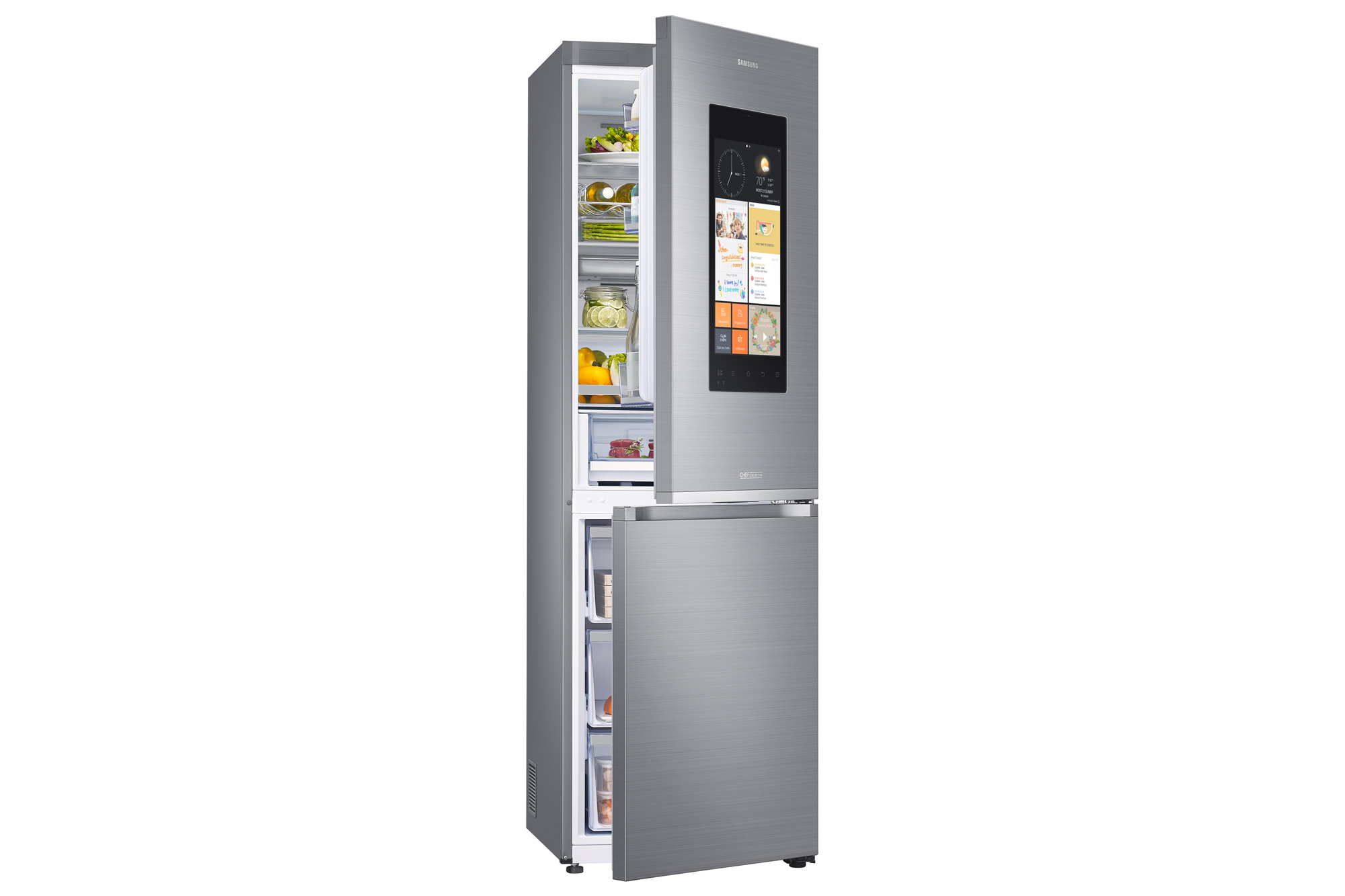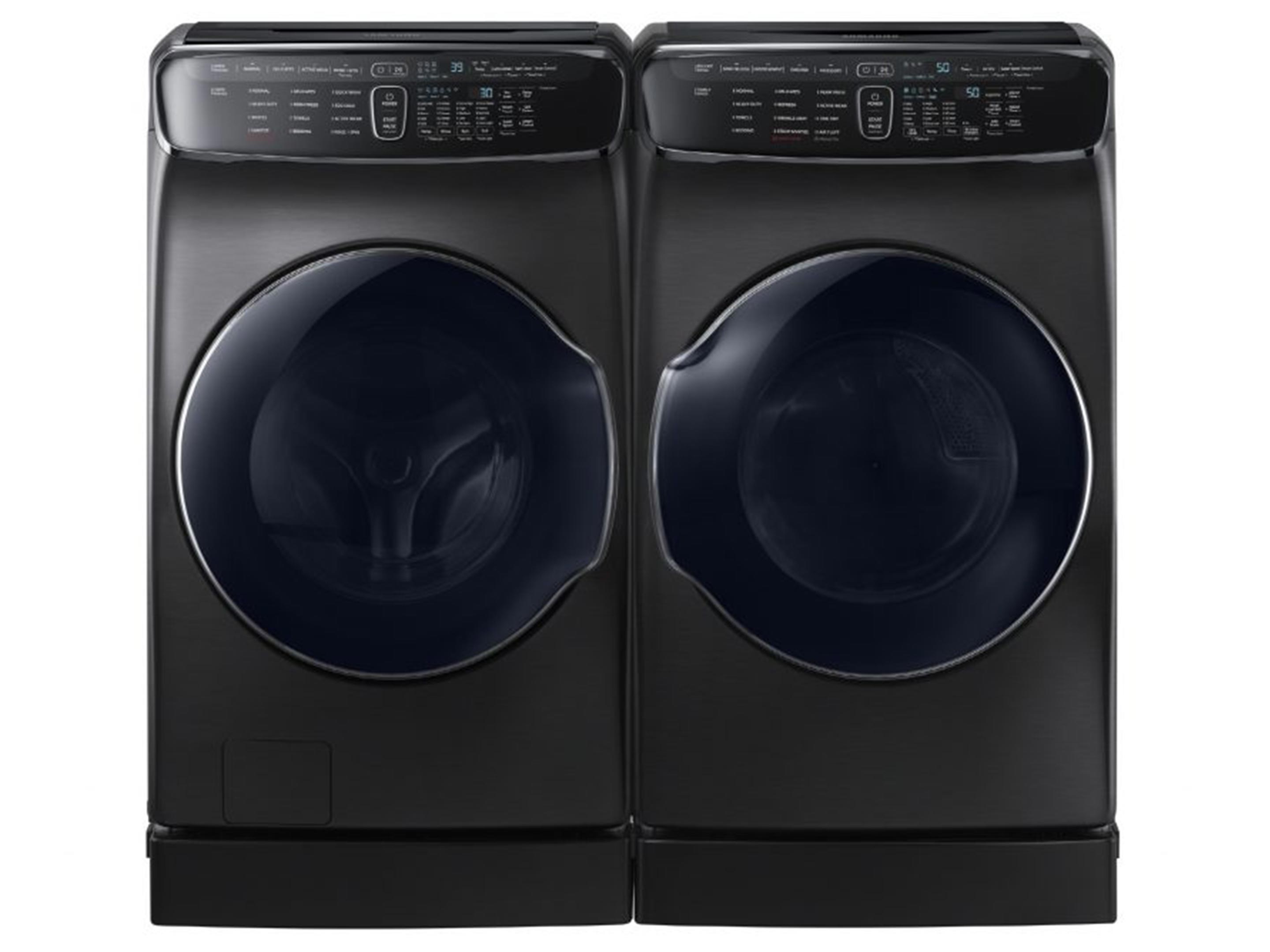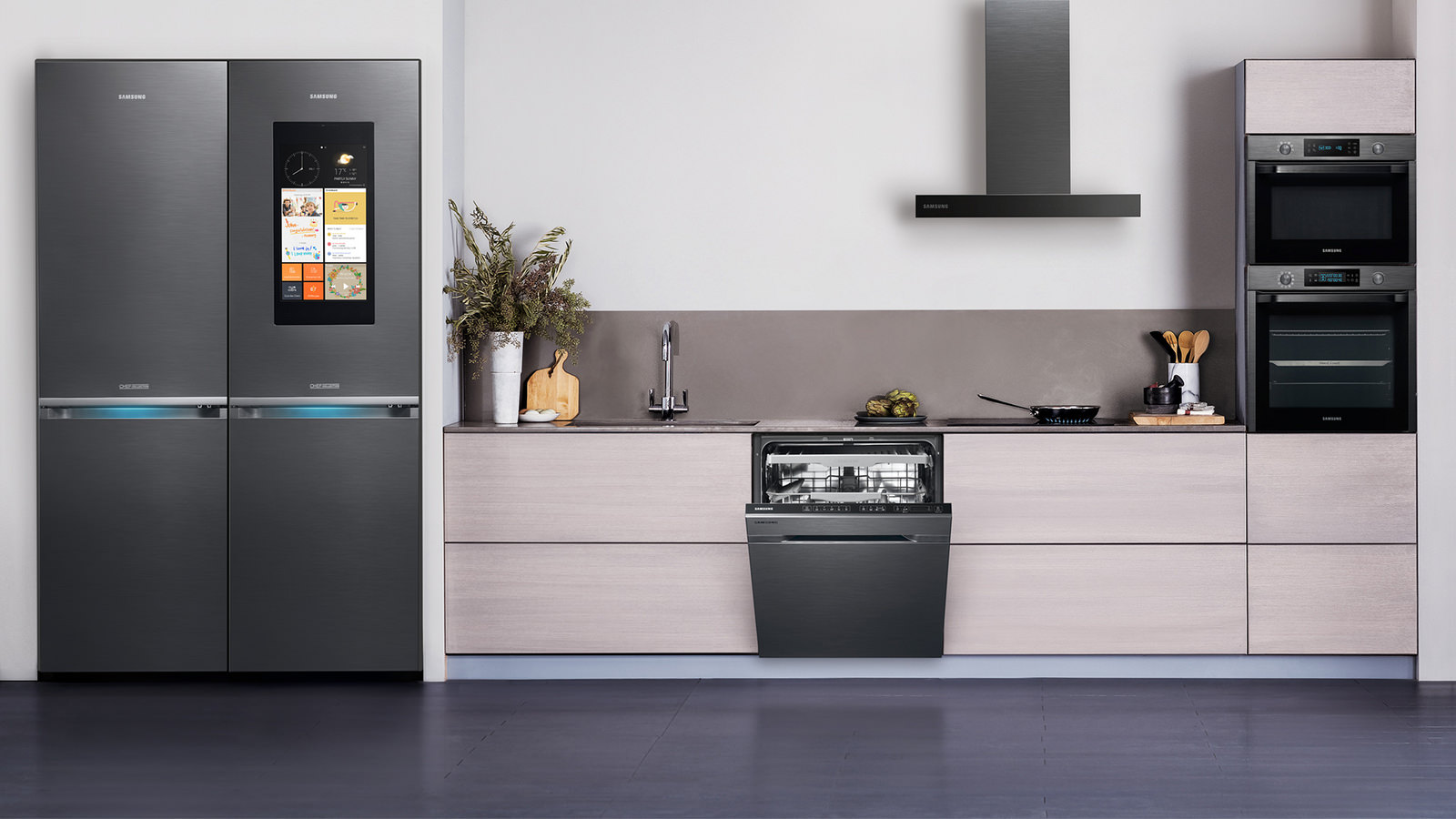
If CES 2017 was any indication, Samsung thinks appliances should be connected smart devices that do more than just store food or wash clothes. The company is pushing this narrative even further this year, and in an exclusive interview with MobileSyrup, Samsung’s head of appliances in South Korea laid out the company’s vision for the future.
Sunggy Koo, vice president of Smart Appliances and Home IoT, Samsung Electronics, is an interesting fit for such a role. He joined Samsung on October 1st, 2016, and admits he had “zero industry experience” in the consumer electronics business. Coming from IBM, his pedigree was full of networking, cloud, IoT (Internet of Things) and cyber security, having run a global team working with the telecommunications industry for IoT and cloud.
Now he’s in charge of Family Hub, smart appliances and smart home for Samsung, essentially leading the way forward to where the company wants to go. His main responsibility is for developing Family Hub, including sales and marketing, to make it a viable platform beyond what it does today.
‘A new category’

Koo believes Samsung has “created a new category” with its smart appliances, though he didn’t mention that competitors, particularly rival LG, had already been doing the same thing at the same time.
In any case, his stated goal is to change the kitchen, how time is spent in it, and what types of products the company brings to market to enable that.
“The way we see the interaction and experience with the refrigerator is going to be different in the sense that it doesn’t move, the screen size is bigger, and the apps and content we would put in would be more specialized and focused to make sense being in there,” says Koo. “There won’t be app stores and things like that, we will have partners and content providers to help us. I really want to provide only the content and services that make a difference in everyday use.”
Looking at the current set of features adorning the 21.5-inch touchscreen LED plastered on the right door, the direct tie-in to the Family Hub app for mobile devices adds some personalization. Users can send pictures or update their own profile and have it reflected on the larger screen. Spouses can leave notes for each other, or for kids, and even listen to Spotify through it.
“I thought a fridge would be a 10-year purchase, but studies are showing it’s now seven years”
Recipes would be readily available, and S Voice has also been baked in to this year’s iteration, a challenge to LG bringing in Amazon Alexa into its own fridge. Cameras inside can keep an eye on food inventory, adding the ability to create shopping lists and place orders online for whatever the kitchen needs.
Much of this can already be done through a phone or tablet, and standalone smart home devices like those running Alexa or Google Home could pretty much do the same thing, without a screen, of course. With more flexibility and an easier upgrade path in that context, why bring it into the kitchen with a stationary fridge?
“I’ve heard some people say ‘you have to make it exactly like smartphones’ in terms of apps, and then others say ‘no, it’s not a phone, it’s a huge fixed screen that is always on’ and I see what’s in between those two,” he says. “If you look at the experience that we have every day, minute or second with our smartphones, I don’t think we’re going to be able to do that with our refrigerator.”
Currency challenges

That is probably stating the obvious. An appliance is nothing like a smartphone, or vice versa. A refrigerator usually sits idly by doing its job for up to a decade, begging the question of how current Family Hub could possibly be even five years down the road.
Case in point: last year’s Family Hub refrigerator — at least the one with the screen on it — will be able to upgrade to 2.0 except the S Voice integration isn’t backward compatible. That kind of cannibalization is an example surely to be replicated as new features and hardware upgrades are made to the Family Hub ecosystem in subsequent years.
“We had a huge debate going on about that. It’s hard to foresee or forecast what kind of cool technologies we’re going to put in down the road. It’s a tough situation sometimes,” he says. “When I joined the company, I thought a fridge would be a 10-year purchase, but studies are showing it’s now seven years. There’s no single straightforward answer on this, so we have to manage expectations well, communicate with customers, and where there are potential software upgrades, we roll them out quickly.”
Software can only go so far, which is a reality the automotive industry is learning the hard way as far as keeping in-car infotainment systems current over the life cycle of the vehicle. Appliances are longer-term purchases too, and Koo admits that as much as Samsung is trying to mitigate feature loss moving forward, it is “unavoidable” with longer-term products like appliances.
Looking for food

Then there’s the matter of food. LG has already added food scanning into its InstaView fridge last year, and has continued with it this year, including analysis on usage and eating habits. It scans food for expiration dates, and as noted earlier, embeds Alexa voice control too.
Samsung’s fridge doesn’t scan food inside yet, so while highly connected on the outside with its large display, there is little tying in the product’s primary purpose. Koo says Samsung is already heading towards that, requiring practical steps to get there.
He envisions a scenario where he could wake up in the morning and step on a scale that communicated his weight wirelessly to the refrigerator. He could then head downstairs, approach the fridge, which could take a photo of him, and then make suggestions for recipes or foods he should avoid that are inside.
“I used to sell artificial intelligence (AI) from IBM, so I know what it takes,” he says. “Dreaming about that kind of use case — what to eat, not eat, drink water, recognizes what food is stored inside and knows how fresh it is. There are many ideas, even within the team on what to do, but what I’m giving as a guideline is, you can dream about a lot of future things, but let’s focus on things we can actually implement that people can deploy and use to help better their lives.”
This is partly why he says he views food scanning as only one element. The company is looking to manage food from the moment it’s purchased all the way to the moment it’s consumed, and how Family Hub can integrate with that.
“Software can only go so far, which is a reality the automotive industry is learning the hard way”
Samsung won’t be able to pull that off on its own. Being a Tizen-based system, Family Hub will require strong developer support for the key apps users will expect to be included. S Voice hasn’t seen a significant upgrade in years, and the likelihood of a third-party voice platform seems ominous at this point.
Android and iOS support would be necessary to make this seamless in connecting with mobile devices, which is largely why core third-party apps that run on both would probably take precedence.
While this is the second-generation smart refrigerator, plus the Flex Wash and Flex Dry laundry products, Samsung’s foray into smart appliances is a gamble for both the company and its consumers. Pricing hasn’t been revealed yet for the Family Hub 2.0 refrigerator line, nor for the Flex laundry line.
The question of whether to buy now or wait till a newer, more advanced model launches next year, never applied to appliances all that much before. By making them “smart” they arguably become more expendable in a shorter time when they would otherwise physically be able to function just fine.
“That is our challenge,” Koo concludes. “Even if the technology makes it possible, I’ve always been trained to think of the customer benefits first before a product comes out.”
MobileSyrup may earn a commission from purchases made via our links, which helps fund the journalism we provide free on our website. These links do not influence our editorial content. Support us here.


